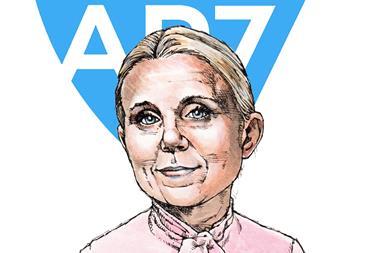SWEDEN - Tredje AP-fonden (AP3), the Third Swedish National Pension Fund, lost SEK 44.8bn (€4.03bn) in 2008 as it admitted its risk diversification strategy "did not bear fruit".
Figures from the pension buffer fund for the year ending 31 December 2008 showed the value of the fund had fallen to SEK 181bn, similar to 2005 levels, as it reported a total return of -19.8% after expenses.
AP3 admitted that the losses in the last year had reduced its annual rate of real return from an average of 3.8%, between 2001 and 2007, to just 0.4% a year from 2001-08, which is significantly below the average 4% annual target for the fund.
The 2008 annual report revealed AP3's normal portfolio, which comprises listed equities, fixed income and alternatives, achieved a return of -16.3%, in addition the fund's strategic positions contributed a negative -2% to the total return, while the active return reported a negative -1.4%, bringing the overall return to -19.7% before expenses.
Within the normal portfolio currency exposure made the highest contribution of 6.3% to the overall portfolio return of -16.3%, following the depreciation of the Swedish krona, while fixed income assets also produced a positive addition of 2.2%.
However AP3 confirmed its equity portfolio reported the biggest losses of -38.8%, but private equity was in positive territory returning 8%, as was real estate producing a 2% return; however, new strategies achieved a yield of -31.6%.
Kerstin Hessius, chief executive officer at AP3, said: "A relatively high level of portfolio diversification was insufficient to ensure a satisfactory result in 2008. We simply have to acknowledge that the overall level of portfolio risk was too high. At operational level we continued to focus on portfolio structure and risk."
AP3 said it had reduced although it had reduced equity exposure by 4.5% over the year, at the end of December 2008 the buffer fund's asset allocation comprised 45.9% in listed equities, 37% in fixed income, 8.9% of the portfolio is in real estate and 6% in private equity, while 1.7% is allocated to 'new strategies' and 0.4% is used to take strategic positions.
In the annual report, Hessius stated: "During the year we worked intensively to diversify risk, purchasing real estate and investing in new areas such as secured bank loans, agricultural land and insurance-related securities. This involved reducing our exposure to the equity market in favour of other investments. We also moved to divide asset management responsibilities between passive exposures and active risk to enhance our risk profile and generate greater scope for higher returns."
But she admitted that, "though well-founded, our strategy did not bear fruit in 2008: risk diversification is little help during a mass flight from risk. It is very difficult to construct a portfolio that can withstand a systemic failure, and we can merely acknowledge that the AP3 portfolio was not designed to handle the crisis".
The CEO acknowledged the buffer fund "did not realise quickly enough" that the collapse of Lehman Brothers "presaged a systemic crisis capable of causing a worldwide recession", and initially it focused on limiting counterparty risk.
AP3 highlighted its major losses were on equity investments and credit bonds and said "in retrospect, we should have reduced portfolio risk further in order to limit losses", but it had "underestimated the risk of a mass flight from equities and other securities".
Hessius added: "Nevertheless, a long-term investor like AP3 has the opportunity to recover losses when the market turns. At AP3 we have a lot of hard work in front of us as we seek to diversify risk, capitalise on new openings and limit the risks that offer the lowest rewards over time. We expect 2009 to be another major challenge in our drive to be a successful pension manager."
If you have any comments you would like to add to this or any other story, contact Nyree Stewart on + 44 (0)20 7261 4618 or email nyree.stewart@ipe.com












No comments yet